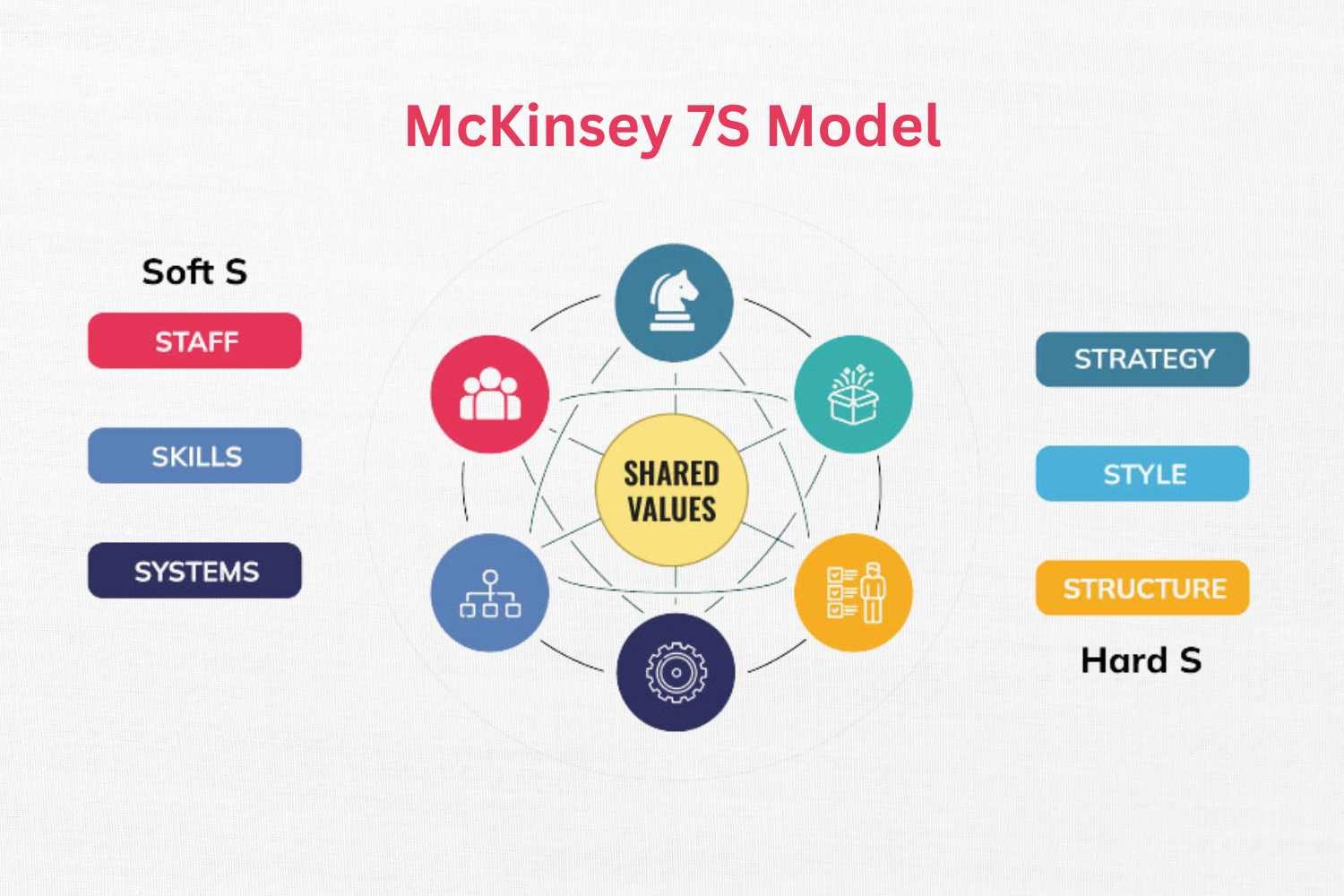The Significance of the McKinsey 7-S Model in Organizational Management
- Home
- The Significance of the McKinsey 7-S Model in Organizational Management

The Significance of the McKinsey 7-S Model in Organizational Management
I. Introduction
A strong organizational foundation is essential for the success and effectiveness of any business. To achieve this, managers need a comprehensive framework that considers various elements and their interdependencies. The McKinsey 7-S Model is one such tool that provides a holistic approach to organizational management. By understanding the relationships between strategy, structure, systems, shared values, skills, staff, and style, managers can effectively align their organizations and drive success.
II. Overview of the McKinsey 7-S Model
A. Concept and Background
The McKinsey 7-S Model, developed by management consulting firm McKinsey & Company, recognizes that organizational effectiveness requires the alignment of interdependent elements. Originally introduced in the late 1970s, the model has become widely adopted due to its simplicity and practicality.
B. Seven Interdependent Elements
- Strategy: This element defines an organization’s long-term goals and objectives. It includes decisions regarding market positioning, product development, and competitive advantage.
- Structure: The organizational hierarchy and reporting relationships fall under this element. It encompasses factors such as division of labor, coordination mechanisms, and decision-making processes.
- Systems: Processes and procedures that drive the organization’s operations are part of this element. Examples include performance management systems, information systems, and communication channels.
- Shared Values: Core beliefs, values, and culture shape an organization’s identity. Shared values create norms and influence employee behavior and decision-making.
- Skills: Unique capabilities, expertise, and competencies are encompassed by this element. It includes both technical skills required for specific tasks and broader skills needed for organizational success.
- Staff: Human resources and talent management strategies fall under this element. Recruitment, selection, training, and development are essential for building a skilled and motivated workforce.
- Style: Leadership style and behavior are critical factors that influence an organization’s culture and employee engagement. This element addresses the leadership approach in areas such as decision-making, communication, and conflict resolution.
III. Interactions and Relationships
A. Interconnectedness of the Elements
The McKinsey 7-S Model recognizes that the elements are interdependent and mutually reinforce each other. A change in one element can have ripple effects throughout the organization.
B. Impact of Changes
Changes in one element often necessitate adjustments in other elements to maintain alignment and balance. For example, a new strategy may require a reorganization of the structure, adjustments in systems and processes, and a shift in shared values and leadership style.
IV. Application of the McKinsey 7-S Model
A. Successful Implementations
Several organizations have successfully applied the McKinsey 7-S Model to improve their effectiveness. For instance, IBM utilized the model during its transformation from a hardware-centric company to a solutions-focused organization, achieving significant growth and innovation.
B. Benefits of the Model
The model provides a comprehensive framework for diagnosing organizational issues, identifying misalignments, and shaping change efforts. It enables managers to take a holistic approach, considering all critical dimensions of the organization.
C. Addressing Organizational Challenges
The McKinsey 7-S Model can be applied to address various challenges such as mergers and acquisitions, leadership transitions, and cultural transformations. It aids in identifying areas of misalignment and provides a roadmap for the necessary changes.
V. Critiques and Limitations
A. Criticisms
Critics argue that the McKinsey 7-S Model oversimplifies organizational complexity. Some contend that the model neglects external factors such as market dynamics, customer demands, and industry-specific factors.
B. Mitigating Critiques
While addressing external factors is crucial, the model’s strength lies in its focus on internal alignment. By supplementing the 7-S Model with other strategic frameworks and considering external influences, organizations can mitigate these critiques and achieve a more comprehensive analysis.
VI. Conclusion
The McKinsey 7-S Model offers managers a valuable framework for organizational effectiveness. By considering the interdependencies of strategy, structure, systems, shared values, skills, staff, and style, managers can drive alignment and create a strong organizational foundation. While the model has its limitations, its continued relevance in organizational management is assured. As businesses evolve and face new challenges, the model will likely adapt and develop further, empowering managers to navigate changing landscapes and drive success.
Note: Throughout the article, maintain a clear and concise writing style, using action-oriented language to engage the reader and ensure comprehension.
- Share
